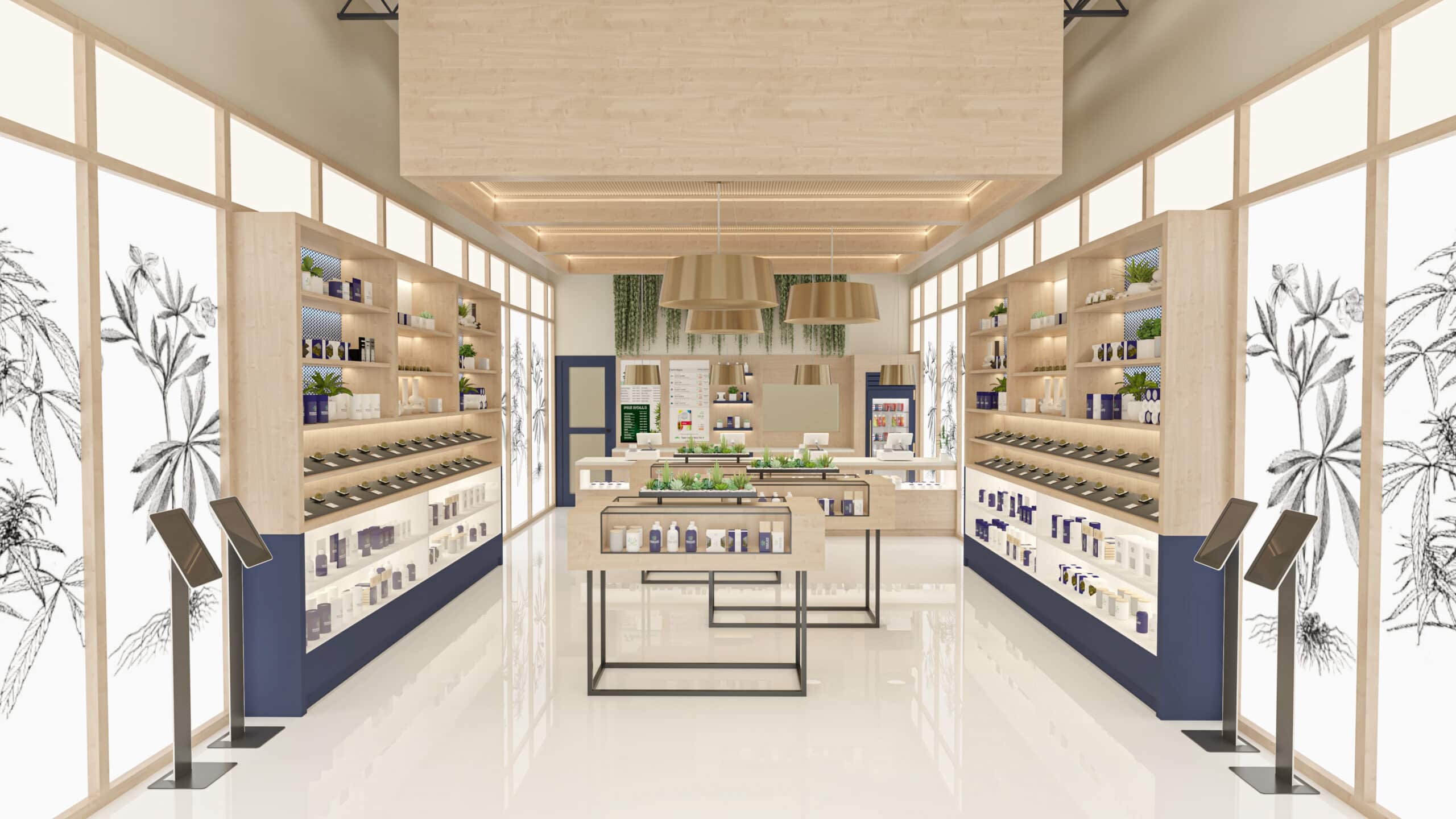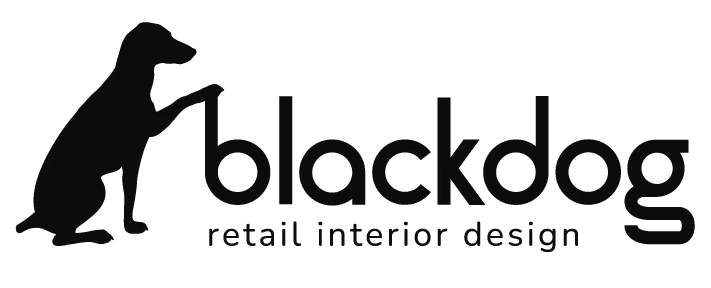protecting your investment through design


If you’ve started or are in the midst of opening a retail location, you are well aware of all the financial risk involved and the tireless work put into getting to the grand opening day. You’ve probably needed to invest in resources you didn’t even think about in the beginning.
You probably didn’t go it alone either. You’ve got a team. Your attorney protected your business interests and prepared necessary documents for you. Your security team made sure you were compliant and will be protected in the event of theft. Your accountants, bookkeepers, banks and lenders secured and maintained your finances. Insurance agent? Yes. You probably even hired someone to create and manage your branding & packaging. The list can go on and on of who you’ve trusted to make sure your investment is gaining returns and growing.
So… who did your design?
How did you figure out what you store would look like? How did you select everything for your contractors to use while still keeping tabs on your budget and timeline? How did you narrow down all those dreamy ideas into a solid plan for your space? Did you know how to lay out the space? Or did you decide to leave it where the previous tenant had it just because you weren’t sure and didn’t want to make a costly mistake?
These are just tiny pieces of what we do as retail interior designers. Looking at the whole picture- our design expertise protects your interior investment much in the same way as the other people on your team have protected you. You rely on us to make important decisions on time and under budget. Many many new owners don’t really have a good sense of what it costs to build & furnish a dispensary.
Medical Marijuana Business Daily stated that real estate and renovations are one of the largest costs for dispensary businesses. Owners said that they spend more on real estate and renovations during their start-up phase than any other expense. If you’ve been through it before, you know this is true. The components of that huge cost can include things that your customers will probably never see; HVAC or plumbing overhauls, back of house fulfillment areas and security systems.
So why would you be ok with risking your investment?
Cannabis specific Retail Interior Designers save you time and money. We can find you better pricing, better resources and access to things usually reserved for the trade. Being specific to cannabis, we know what works, what doesn’t and how to select perfect finishes and furniture that will be long lasting, energy efficient and wont go out of style. We manage the traffic flow of your customers and can plan a great layout for not only those busy rushes, but deter theft. Not only that, we have a pulse on the industry and how to make your space reflect your unique brand and story without being trendy or temporary. We take the costly guesswork out of ordering fixtures, picking finishes and making sure your contractor can actually build that gorgeous cash wrap counter.
If you’ve explored hiring an interior designer for your home or business, you’ve probably seen a wide range of the way they bill. A lot depends on the location, experience, type of design and ethos of the designer. A lot of designers don’t like talking about the unsexy part of their work, their invoices. But it’s crucial for anyone about to hire a designer to understand the differences, the pros and cons and exactly what you’re getting into.
Whichever way your designer bills, make sure you fully understand everything before signing AND make sure everything is in writing first. A legit contract. Interior design should never be a ‘let’s see how this goes’ kind of scenario. As much as designers love to be creative and innovative, this is a business. Signed contracts are a must.
Here are the most common ways designers charge
Hourly Rate: Rates range greatly depending on things like experience, location, and the complexity of the project. The designer tracks the time spent on the project and bills the client accordingly. Designers newer to the industry will likely charge less, but require more hours. Many designers charge different rates for project management work versus design work.
Flat Fee: A flat fee is based on the scope of work and deliverables, square footage of the space, and estimated time required to complete the project. Flat fees are predictable for both the designer and you. Typically only well seasoned designers work on flat fee.
Percentage of the Project Cost: The percentage can range from 20% to 40% or more, depending on the designer & the project needs. The designer’s fee scales with the project budget.
Cost-Plus: The designer charges the client for the net cost of items & services purchased plus an additional markup. This covers the designer’s time and costs. Typically freight and installation are calculated at a different rate.
Retainer: A retainer ensures that the client is committed to the project and helps cover the initial costs incurred by the designer, such as research, consultations, and planning. This holds your space on the designers calendar and is typically subtracted from future or final invoices.
Quick backstory, I was a high end residential designer in Chicago for way too long. Because we sold items directly to our clients, and did loads of custom furniture, drapery and accessories, we billed at cost plus. On every single estimate we required a 70% deposit to place the order. All freight charges were doubled to the client for order tracking and if we needed to be onsite for any reason (driving to meetings, talking to the plumber, installations, showings) we billed hourly. At the start of every project we took a hefty retainer. Again, this was high end residential design and we had an on staff, full time, project manager/bookkeeper to make sure all the billing was up to date and accounted for.
Here is why I like flat fee for retail interior design
As a creative type, I don’t like being locked into sourcing items and products that would yield me the highest profit margin. I like to freely select the best item for the space, style, client and budget. I like sourcing locally for my clients from other small businesses whenever possible. I am so proud of my rolodex of amazing vendors and products I’ve found over the years. My go-to’s that my clients can purchase or hire directly. Exploring new products and artists, always editing and adjusting. I love being able to recommend them to the right project because it’s simply the best option. And I love that my clients know that this is specifically how I work. I’m not in it for a kickback.
So I’m primarily a flat fee designer. The reason it works so well for retail I think comes down to a few key things.
I’ve been a retail exclusive designer for so long I fully understand all the steps and pieces to the puzzle. It is so crucial at the start of every single project to spell out all of the deliverables. What specifically your designer will and will not be working on for you. I make sure that what I’m working on is truly needed and valuable to the project. I eliminate scope creep by being focused on the key components of the design.
I greatly dislike surprising my clients with time bills. Clients greatly dislike getting surprise time bills too. When I do happen to do hourly design, each week I lay out a super detailed plan of attack and share it with you. This includes what I’m currently working on, what I will be working on and any questions I have for you for the week. I try to streamline even hourly design so that you are always aware of the hours being spent on your project. I make sure everything I’m working on has been approved by my client and verify beforehand that they know I’m working on it and they’re going to receive a time bill for it. No surprises. If a designer wants to work hourly on your project, be sure that you know upfront if they’ve got a similar ethos and transparency in logging your hours. I can ballpark estimate any hourly design project. Any time we’re getting close to that estimate, my clients get a notice letting them know that we’re about to hit the number we agreed on. Another note about hourly rates. Seasoned designers will have high rates and high retainers. It takes us far less time to do the same task as someone new to interior design. If your designer has little or no experience in a highly niched type of design (like retail cannabis dispensary design), you can expect high amounts of hours on things like compliance and regulation research, ADA laws and sourcing specialty fixtures. While their rates may be lower, they’re naturally spending significantly more time on it.
You can budget for design before you get started. This is huge in retail design. Typically on a project there are teams of people overseeing the construction, operations, build out and budget for design. Interior design services need to fit into that budget. If you’ve only got 300k to finish out a space but you have no idea the final bill from your designer, how do you know how much you can spend on the actuals? You won’t. I like this detail so much that I charge everyone the same amount and even blast it on the website. Haze free. The designs are always completely custom, but my package prices are one size fits all.
